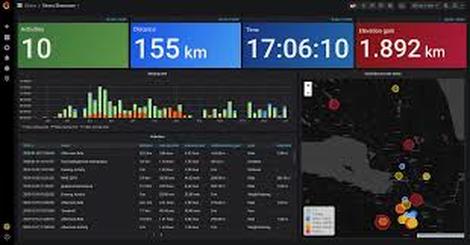Among the last tranche of announcements coming from AWS re:Invent last week was one that almost got by us: the unveiling of a new managed service featuring the open source Grafana visualization engine. The new service comes as the result of a partnership between AWS and Grafana Labs that includes joint sales and licensing of the new service, plus joint development to continue enhancing the service. While AWS is no stranger to joint go to market and licensing agreements (think VMware), in the open source space, this is new ground.
Specifically, AWS announced the preview of the Amazon Managed Service for Grafana that lets you visualize the data that is core to observability: logs of actual events; metrics that measure key system attributes; and traces that show the end-to-end journey of processes or applications that consume microservices. Out of the box, there are native integrations with AWS cloud monitoring and management services such as Amazon CloudWatch and X-Ray.
Grafana has become the go-to dashboard for visualizing activity in dynamic, microservices-based applications running in containerized environments. It has been embraced by a wide variety of third party data platforms, such as InfluxData, Google BigQuery; cloud platforms such as Oracle and Azure; and application performance management systems, such as New Relic.
Grafana’s openness makes for an obvious contrast to Kibana, which was designed solely for the Elastic stack, or the proprietary dashboards for Splunk. Grafana supports a wide variety of plug-ins for sources that, in some cases, include SaaS monitoring services that could be deemed competitors to the related open source project Prometheus such as Google Stackdriver (now branded Google Cloud Operations Suite), Oracle Enterprise Manager, not to mention Elasticsearch.
The origins of the partnership are described in a blog published last week by AWS open source strategy head Matt Asay. He noted that the roots of the partnership date back to cooperative efforts to develop Grafana plug-ins for AWS’s own services including CloudWatch, X-Ray, and the Timestream database. In the managed service, integrations have been added for AWS CloudTrail and AWS Single Sign-on.
Under the deal, AWS will contribute licensing revenue to Grafana Labs. They are the company that leads the Grafana open source project and offers Grafana Enterprise, its own managed cloud service, and other offerings. Additionally, AWS and Grafana will co-develop code for future enhancements of the service. For instance, we could imagine AWS rolling up its sleeves with the rich palette of enterprise connectors that Grafana Labs has already developed.
In a related announcement, AWS announced a preview for a related service, Amazon Managed Service for Prometheus, an open source monitoring tool frequently implemented alongside Grafana for monitoring container environments. This is not part of the open source partnership for the core managed Grafana service, but we think that Prometheus could also be fertile ground for future joint development and go to market. For instance, AWS has already developed support for running Cortex, a time series database that is used for managing Prometheus implementations at scale.
AWS has had a long, and in some quarters, embattled history with open source. On the technology side, AWS delivers numerous managed services built on open source technology. In the database space, that includes Amazon Relational Database Service for MySQL, PostgreSQL, and MariaDB; Amazon Aurora database services for MySQL and PostgreSQL; and Amazon ElastiCache for Redis. Additionally, AWS offers API-compatible services including Amazon DocumentDB (with MongoDB compatibility) and KeySpaces (for Apache Cassandra). It is one of the maintainers of the Redis database. And in some cases, it has out open-sourced other open source providers. For instance, it offers the Open Distro for Elasticsearch that builds on the existing open source Elasticsearch and Kibana visualization, but adds the advanced security, event monitoring & alerting, performance analysis, and SQL query features. These are features that Elastic offers, but under a more restricted license.
On this go-round, AWS has changed the script. Going beyond offering coding contributions, it is adding a revenue sharing and joint support component. There are precedents for this in the cloud landscape – we’re thinking about the Google Cloud open source database partnership program that involves joint licensing, go to market, and technical support. We believe that this is the first time that AWS has entered such an active partnership with an open source provider, which proves the maxim, never say never.


